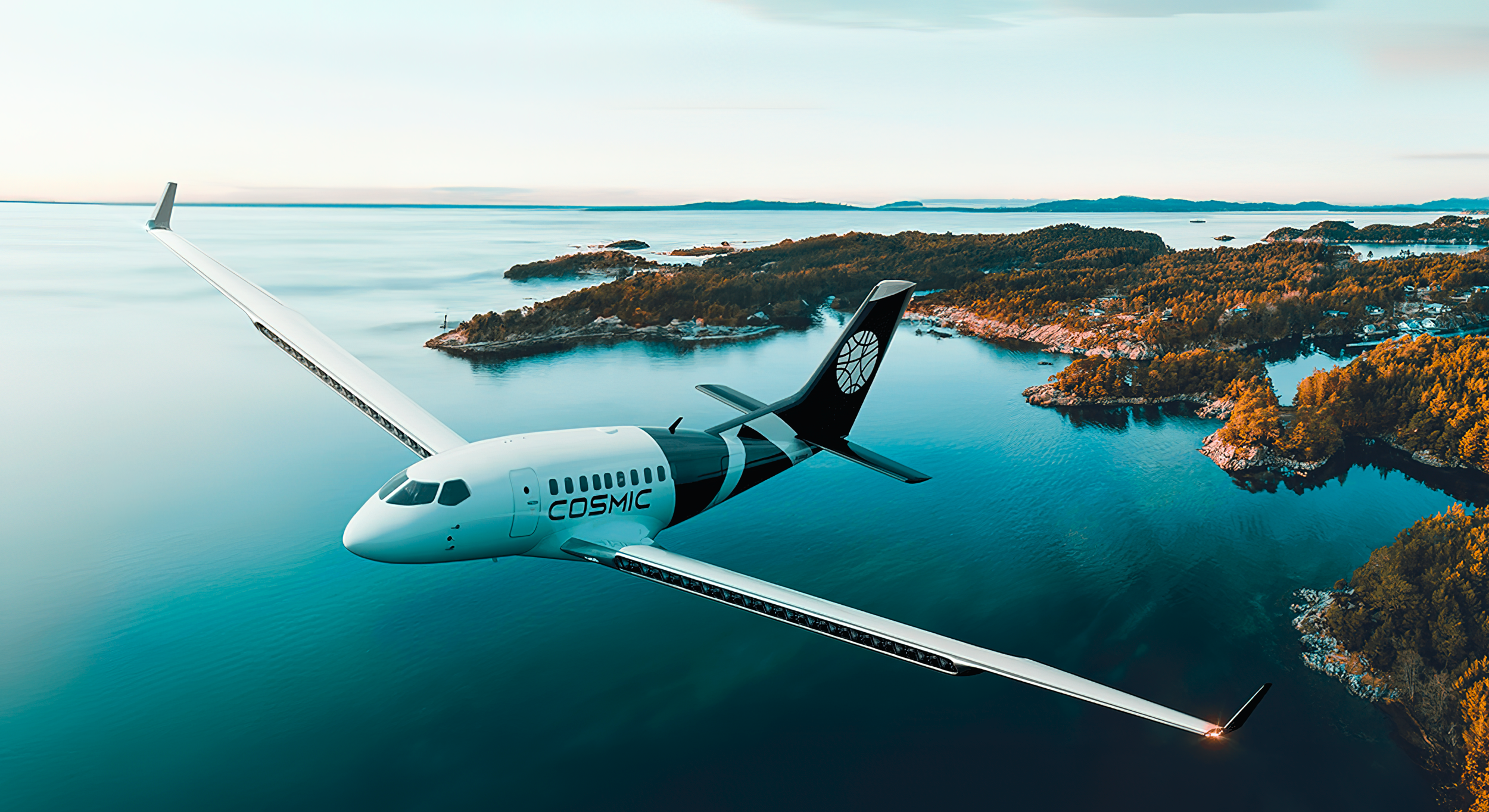Aerospace Products
“It is not really necessary to look too far into the future of aviation. We see enough already to be certain that it will be magnificent. Only let us hurry and open the roads.”
Said by Wilbur Wright in 1908, this line is as true today. From electric aircraft like Cosmic (pictured above) to EVTOLs like Archer, to delivery drones like Zipline, America and the world are poised for a revolution in flight.
This revolution will resolve aviation’s 5% contribution to global warming, transform urban transportation, and enable delivery of critical goods on an unprecedented time-scale. A large number of enabling technologies will enable and accelerate new products within this sector. Cheaper and more efficient electric motors and batteries, novel control systems to enable autonomous flight, and hydrogen utilization will enable new aircraft. Better CAD, simulation tools, robotic assembly, and metal 3D-printing will accelerate development and reduce the number of prototypes required. And novel materials like 3D-printed composites will make lighter-weight components, enabling electric and hydrogen aircraft to meet their range targets more easily.
Dropping Input Costs
Batteries have gotten 2x as power dense and 3.5x cheaper over the last 10 years.
Simulation tools have improved dramatically over the last 20 years. The speed of simulation has increased by several orders of magnitude, but the more meaningful improvement has been in quality. We’ve hit resolution thresholds where important effects are simulated accurately for the first time. This can be the difference in building one $100k prototype instead of 3, and a part lasting 10 years instead of 5. These differences are critical when building prototypes that can cost $1M each.
Costs for robotic automation have declined 6x over the last 20 years.
Large Market
Aerospace products and parts make up a $219B market in the U.S., and hundreds of companies have been founded in this space in the last 10 years.
The aerospace market is somewhat larger than the SaaS market.
Few Startup Competitors
While a large number of startups are building aerospace products, they’ve raised far less money than SaaS startups over the last 10 years. Per year, aerospace startups have raised $620 million, and SaaS startups have raised $4.7 billion. This makes SaaS a 10x more crowded market than aerospace.
Top Companies
Two of the startups that have raised the most capital in the last 10 years are San Francisco-based Archer and LA-based Relativity Space.
Archer which makes electric vertical takeoff and landing vehicles, and has raised $1.3B, and their prototype aircraft completed a Phase 1 test flight in Jan 2024.
Relativity makes 3D printed rockets and has raised $1.3B. Their Terran 1 rocket successfully launched to space in March 2023. It is the world’s largest 3D-printed object.
Aerospace is a very concentrated market with Boeing accounting for 42% of the market. However, Boeing has been plagued by challenges and is known for moving slower compared to companies like Archer, Relativity, or SpaceX.
An introduction to Archer aviation
Top Investors
We took the startups in the petrochemicals space who have raised more than $5M over the last 10 years, and searched for their investors.



